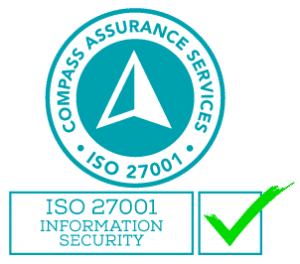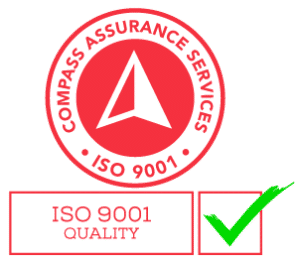A reliable, optimised IT infrastructure is crucial to the sustainability and growth of modern businesses – and Microsoft’s comprehensive suite of technologies offers the tools and platforms necessary to create an infrastructure that will keep your business modern, relevant, and able to adapt quickly.
But when it comes to upgrading or completely rebuilding IT infrastructure, where does the planning start? How do you know which technologies your business needs – not just now, but for long-term operations?
IT Infrastructure Basics: A Solid Foundation
Creating a solid and reliable IT infrastructure involves piecing together various components, each serving a distinct purpose yet interconnecting to form a cohesive system. Understanding the different components of IT infrastructure is crucial to leverage Microsoft technologies effectively.
1. Hardware
The physical aspect of an IT infrastructure, hardware includes servers, workstations, networking devices, and storage units. While cloud solutions like Azure reduce the dependency on onsite hardware, certain scenarios may still require physical infrastructure for specific needs or regulatory compliance.
2. Software
This encompasses the operating systems, applications, and management tools that run on your hardware. Microsoft technologies, like Windows Server for managing server environments and Microsoft 365 for productivity, play a pivotal role in ensuring the smooth operation of business processes.
3. Networks
A critical component, networking enables connectivity among hardware devices and facilitates data communication within and outside the organisation. Microsoft Azure offers a range of networking services, from virtual networks to load balancers, ensuring high availability and scalability.
4. Cloud
The cloud reduces the need for on-premises and physical infrastructure, allowing businesses to host applications, store data, and deploy virtual networks online. Azure enhances collaboration and accessibility, allowing employees to access business resources from any location.
Planning Your IT Infrastructure: From Assessment to Future Goals
Building or upgrading your IT infrastructure is a strategic decision that requires thoughtful planning. The key is to ensure that the infrastructure aligns with your business goals, supports your operational needs, and can adapt to future challenges.
1. Assess Business Needs
Begin by evaluating your current IT setup and identifying gaps or areas for improvement. Consider factors such as data storage needs, processing power, scalability, and the necessity for remote access. Understanding these elements will guide your decisions in choosing the right Microsoft solutions.
2. Define Objectives
Clearly outline what you aim to achieve with the new IT infrastructure. Whether it’s improving data security, enhancing employee collaboration, or ensuring business continuity, having clear objectives will focus your planning efforts.
3. Plan Budget
Establish a realistic budget that accommodates both the initial setup costs and ongoing expenses. Microsoft technologies offer various pricing models, especially in cloud services, allowing you to scale your expenditure according to your needs.
4. Compliance and Security
Assess any regulatory requirements your business needs to adhere to. Microsoft’s solutions offer robust security features and compliance standards, but it’s crucial to select options that align with your specific industry regulations.
5. Consultation and Expertise
Consider consulting with Microsoft-certified professionals or partners. Their expertise can provide valuable insights into the best practices and tailor solutions that fit your unique business requirements.
Microsoft Technology: Solutions for Your IT Infrastructure
A Microsoft-based IT infrastructure is built upon several core components, each playing a crucial role in ensuring a seamless, secure, and efficient digital environment for your business.
1. Cloud Solutions
Azure’s cloud computing platform offers scalable and flexible solutions that can be customised to meet your specific business needs. From hosting applications and websites to managing databases and analytics, Azure provides a comprehensive set of services that support the backbone of your IT infrastructure.
2. Collaboration and Productivity
The Microsoft Office 365 suite enhances productivity and fosters collaboration within your team. With applications like Teams for communication, SharePoint for document management, and the traditional Office suite for day-to-day tasks, Microsoft 365 ensures your workforce stays connected and efficient, irrespective of their location.
3. Security and Compliance
Microsoft’s commitment to security is evident in its comprehensive suite of security tools and features integrated across its technologies. Solutions like Azure Security Center and Windows Defender provide proactive protection against threats, while compliance tools ensure your infrastructure adheres to global standards and regulations.
4. Networking Solutions
Azure’s networking services offer a wide range of capabilities, from simple connectivity to advanced network management solutions. Azure Virtual Network, for example, allows you to create private networks in the cloud, while Azure ExpressRoute provides a private connection to Azure services, enhancing speed and reliability.
Implementing Microsoft: IT Infrastructure Integration
With a firm understanding of the components needed to upgrade or build your IT infrastructure, and the Microsoft technologies that suit those needs, it’s time to implement the solutions.
1. Preparation and Planning
This phase should involve identifying the specific Microsoft solutions that align with your business goals, like Azure for remote working capabilities, or SharePoint and OneDrive for document management and file sharing.
2. Training and Skill Development
Ensure that your IT team is well-versed in the Microsoft technologies you plan to deploy. Microsoft offers extensive training resources and certifications that can equip your team with the necessary skills.
3. Deployment Strategy
Develop a clear deployment plan that outlines timelines, milestones, and responsibilities. For cloud migrations, consider a phased approach to minimise disruptions. Utilise tools provided by Microsoft, such as the Azure Migration Center, to streamline this process.
4. Setting Configurations
Customise the settings of your Microsoft technologies to meet your specific business needs. This may involve configuring settings, developing custom applications, or integrating with existing systems to ensure seamless operation.
5. Testing
Before full-scale implementation, conduct thorough testing to identify and rectify any issues. This includes performance testing, security testing, and user acceptance testing to ensure the solutions meet your business requirements.
Best Practices to Manage and Maintain Your Microsoft IT Infrastructure
Your IT infrastructure is fully functioning – but this doesn’t mean you can stop paying attention to it. Ongoing monitoring, patch management, policy changes, adjusting for new technology: managing an IT environment to ensure optimal performance and maximum security is a never ending task.
1. Regular Updates
Stay abreast of the latest updates and patches for your Microsoft technologies. Regularly updating systems ensures security vulnerabilities are addressed and new features are incorporated.
2. Performance Monitoring
Utilise tools like Azure Monitor to keep track of your systems’ performance in real-time. This enables proactive identification and resolution of issues before they impact business operations.
3. Scalability Planning
Leverage the scalability features of Microsoft technologies, particularly Azure, to adjust your resources according to changing demands. Plan for scalability in your initial deployment to ease future expansions.
4. Security and Compliance Management
Continuously monitor and update your security protocols to protect against new threats. Utilise Microsoft’s compliance tools to ensure your infrastructure adheres to relevant laws and regulations.
5. Data Backup and Disaster Recovery
Implement robust data backup and disaster recovery strategies using Azure’s backup and site recovery services. Regularly test these mechanisms to ensure data integrity and business continuity.
6. Employee Training
Provide ongoing training and resources to users to maximise the benefits of the Microsoft technologies deployed. A well-informed workforce will be able to use the apps and tools with ease, and handle data safely.
Modernise Your IT Infrastructure with Microsoft Technology
Microsoft’s comprehensive suite of technologies offers the tools and platforms necessary to create an infrastructure that is resilient, scalable, and fully optimised to your needs.
The expert Microsoft consultants at Steadfast Solutions can help you upgrade or fully rebuild your IT infrastructure with the right components. We’ll advise and guide you throughout the entire process – from a current IT infrastructure assessment and roadmap development, to technology integrations and ongoing management.




